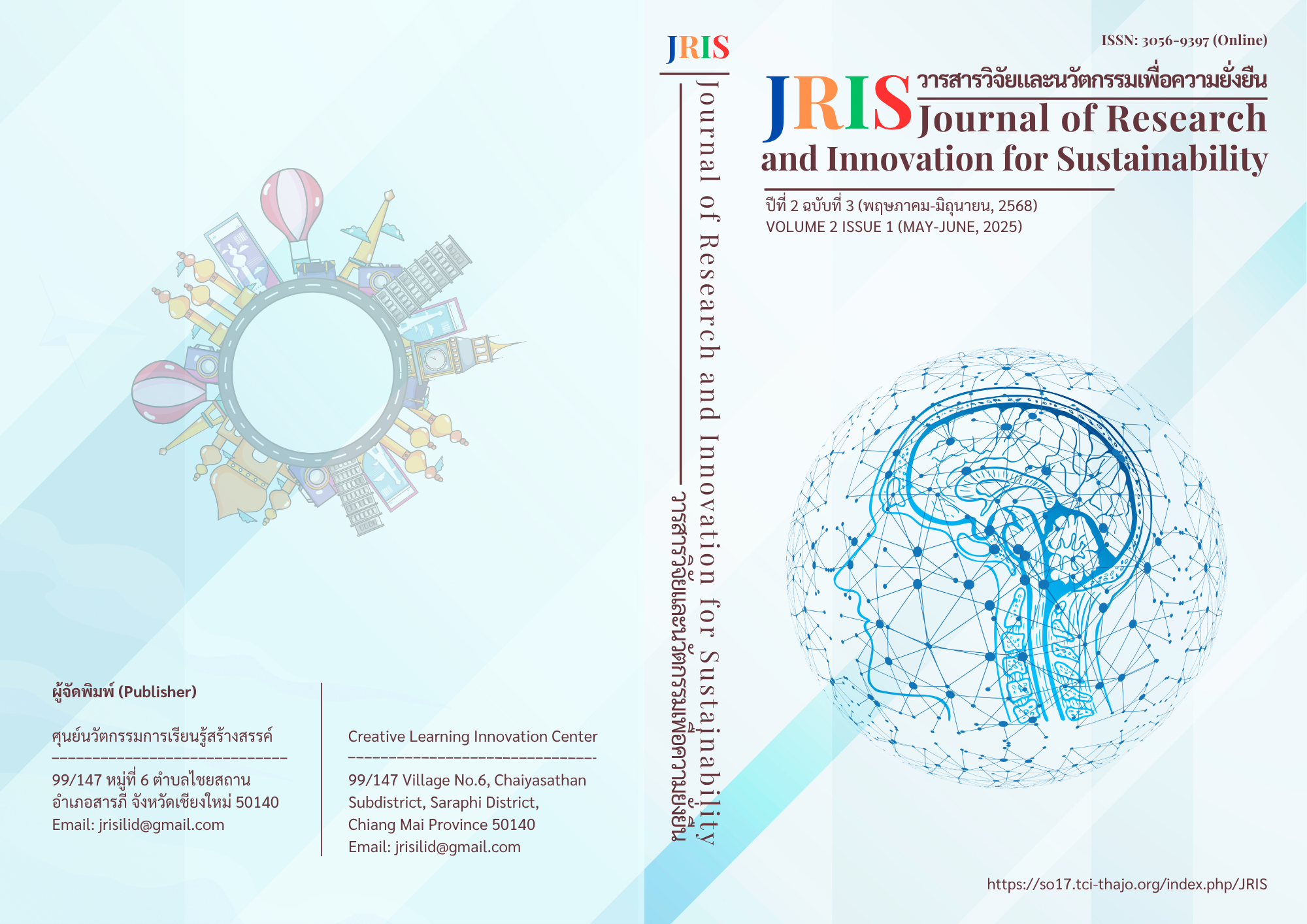THE DEVELOPMENT OF BLENDED LEARNING THROUGH GOOGLE WORKSPACE USING A PROJECT-BASED LEARNING APPROACH TO ENHANCE PRODUCT INNOVATION DESIGN SKILLS AMONG GRADE 8 STUDENTS AT MUEANG PHAYALAE WITTAYA SCHOOL
Main Article Content
Abstract
This research aimed to 1) develop a blended learning instructional model through Google Workspace using the Project-Based Learning (PBL) approach to enhance innovative product design skills for Grade 8 students at Muang Phaya Lae Witthaya School, 2) compare students’ learning achievement before and after using the developed instructional model, and 3) examine students’ satisfaction with the instructional model. This study employed a research and development (R&D) methodology. The sample consisted of 46 students from Grade 8/3, selected through simple random sampling. The research instruments included instructional plans, a learning achievement test, and a student satisfaction questionnaire.
The research findings revealed that 1) the developed blended learning instructional model through Google Workspace using the PBL approach demonstrated an efficiency level meeting the 80/80 standard, with process efficiency (E1) at 84.02 and product efficiency (E2) at 83.48; 2) students’ learning achievement after using the instructional model was significantly higher than before learning at the .05 level of significance; and 3) students showed a high level of satisfaction with the instructional model (Mean = 4.76, SD = 0.54), particularly in terms of active participation in activities, effective use of technology for task management, and the ability to apply acquired skills in real-life contexts.
The results of this study indicate that the blended learning instructional model through Google Workspace using the PBL approach effectively enhances students’ innovative product design skills and can be applied to instructional practices in other educational contexts.
Article Details

This work is licensed under a Creative Commons Attribution-NonCommercial-NoDerivatives 4.0 International License.
Copyright License
Permission is granted to use text, content, images, or any other material from the publication for anyone who wishes to read, download, copy, distribute, print, search, or link to the full text of the article, compile data for indexing, transfer data to software, or use for any other legal purposes, provided that it is not used for commercial purposes or for business benefit. All articles published in the Journal of Research and Innovation for Sustainability are distributed under a Creative Commons Attribution-NonCommercial-NoDerivatives 4.0 International License: https://creativecommons.org/licenses/by-nc-nd/4.0/
References
Horn, M. B., & Staker, H. (2011). The rise of K-12 blended learning (pp. 1–17). Innosight Institute, Inc.
Thomas, J. W. (2000). A review of research on project-based learning. Autodesk Foundation.
กระทรวงศึกษาธิการ. (2552). หลักสูตรแกนกลางการศึกษาขั้นพื้นฐาน พุทธศักราช 2551. โรงพิมพ์ชุมชนสหกรณ์การเกษตรแห่งประเทศไทย.
ปาณิสรา สิงหพงษ์ และอัมพร วัจนะ. (2560). การศึกษาผลการใช้บทเรียนออนไลน์ Google Sites ร่วมกับรูปแบบการเรียนรู้แบบสร้างสรรค์เป็นฐาน(CBL) เรื่อง เคมีพื้นฐานของสิ่งมีชีวิตที่มีต่อทักษะ ในการคิดวิเคราะห์ของนักเรียนชั้นมัธยมศึกษาปีที่ 4. Journal of Modern Learning Development, 8(12), 154–165. https://so06.tci-thaijo.org/index.php/jomld/article/view/263650

